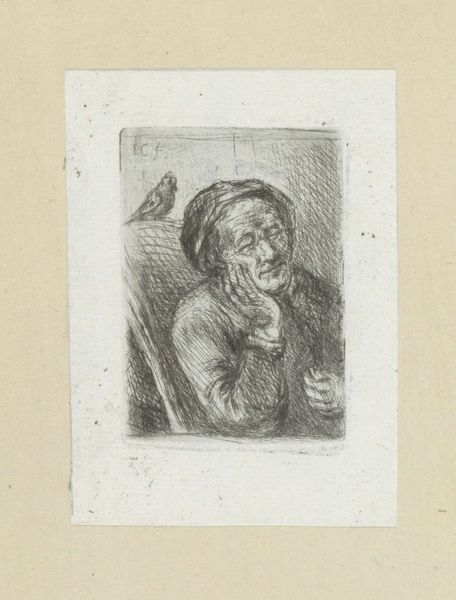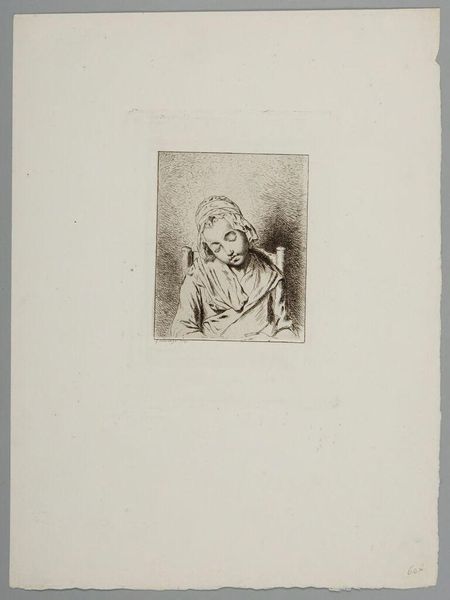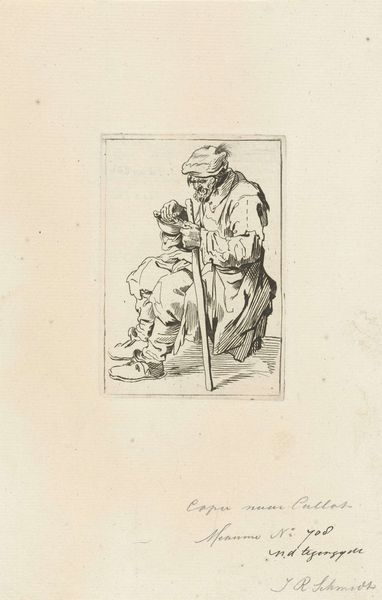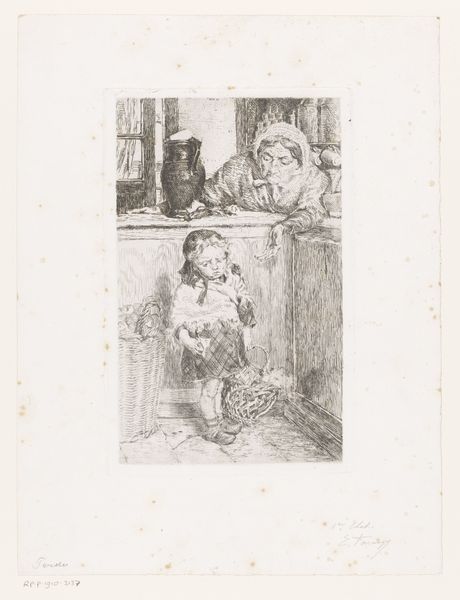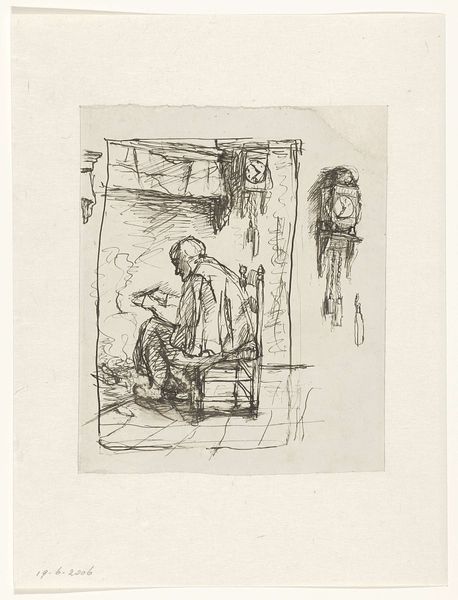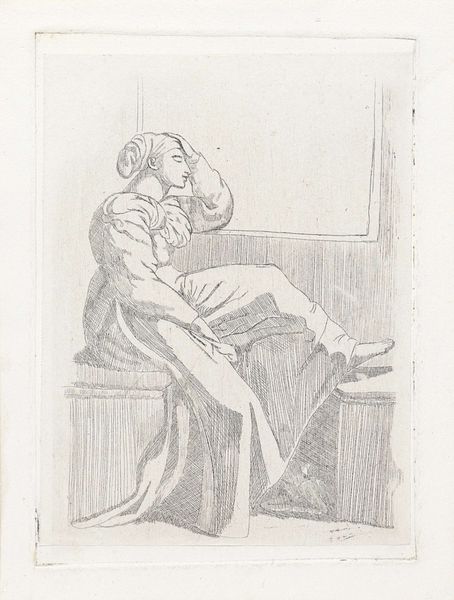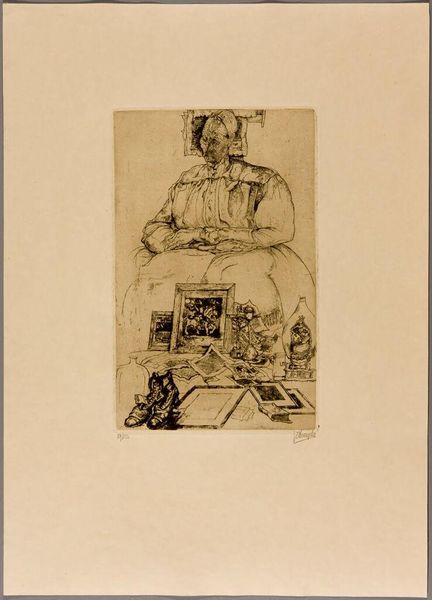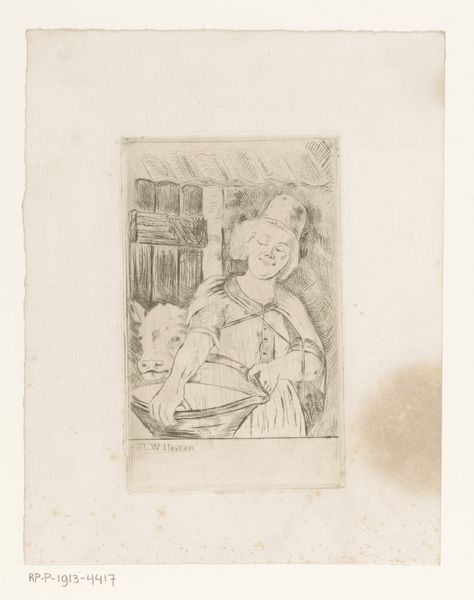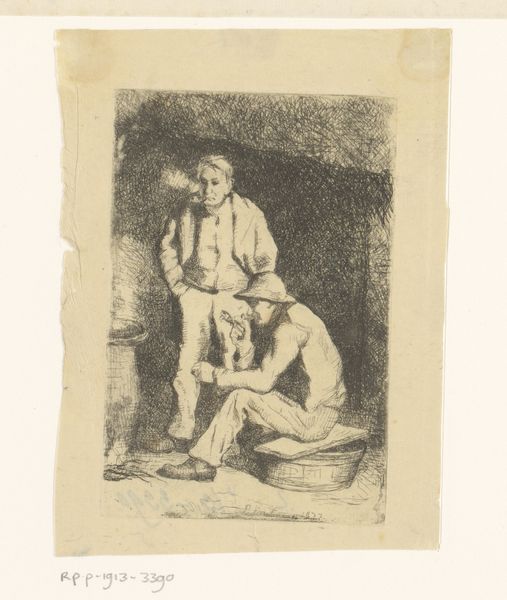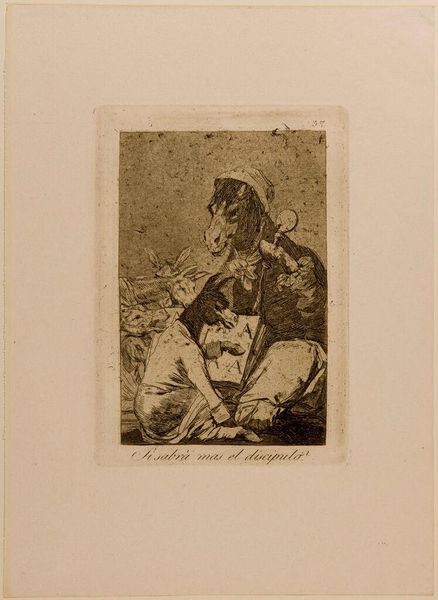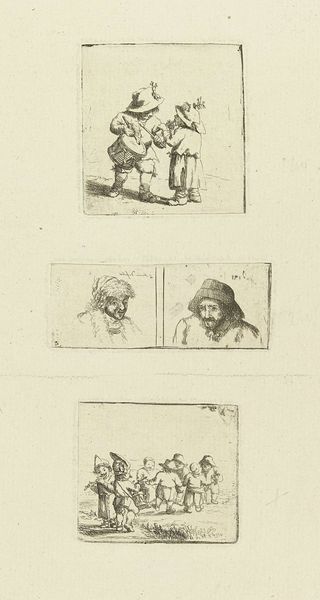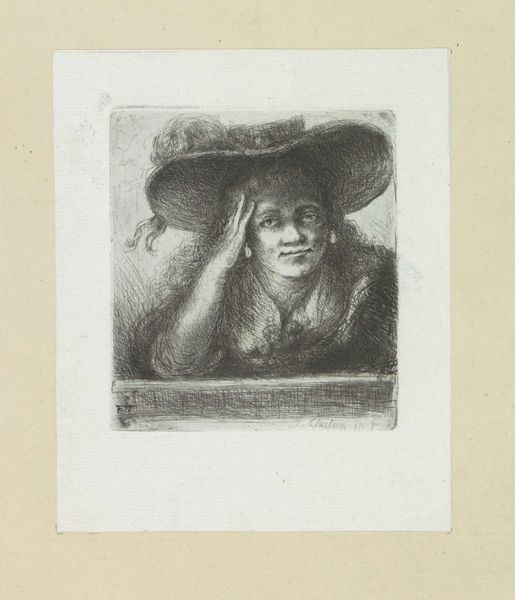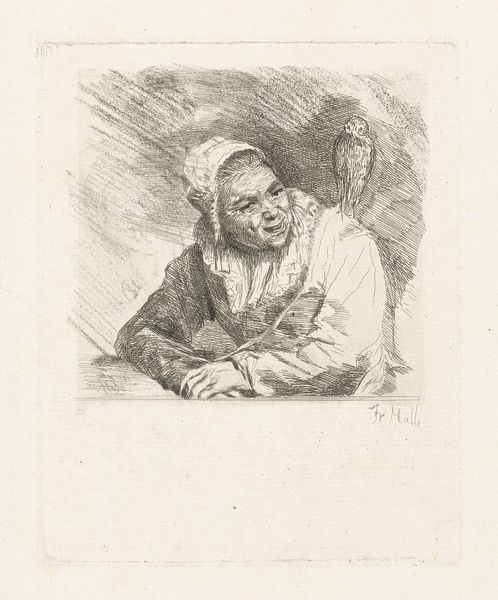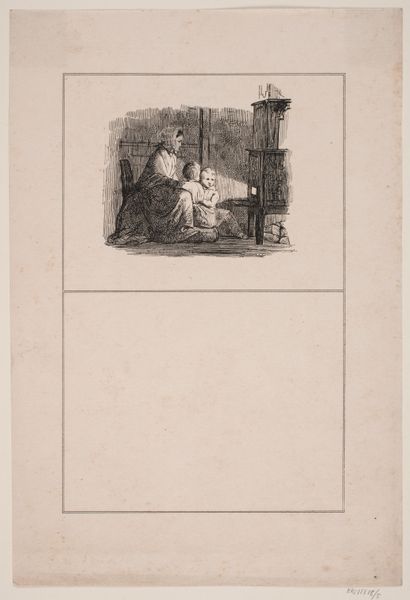
Dimensions: height 50 mm, width 45 mm, height 88 mm, width 57 mm
Copyright: Rijks Museum: Open Domain
Editor: This is "Vrouwenhoofd en dienstmeid met kleinkind," or "Woman's Head and Maid with Grandchild," an etching by Marie Lambertine Coclers from 1785. The depiction of domestic life is quite sweet, but something about the way the figures are rendered makes it also seem melancholic. How do you interpret this work? Curator: I see here a powerful commentary on the societal structures of 18th-century Europe, particularly the lives of women. Coclers’ choice to juxtapose the head of an older woman, perhaps the matriarch, with a scene of domesticity centered on a maid and child opens a dialogue about labor, familial roles, and the cyclical nature of women's experiences. Editor: Could you elaborate on that? I'm curious about the "cyclical nature" aspect. Curator: Well, consider the maid's position within the household and, more broadly, within society. Her life, like that of the matriarch before her, is largely defined by domestic duties and service. Is Coclers suggesting a critique of the limited opportunities afforded to women, especially those from lower social classes? Editor: I hadn't thought about it that way, but it does make you wonder. Was Coclers perhaps subtly advocating for a shift in those societal expectations? Curator: It’s quite possible. Remember, art often serves as a mirror reflecting and refracting the social realities of its time. The choice of etching, a more accessible medium, suggests a desire to reach a wider audience. Coclers might be prompting viewers to question the power dynamics inherent in these seemingly innocent domestic scenes. Do you see the women's gaze directed at us, the viewer? Editor: Now that you mention it, it is interesting how direct the older woman’s gaze is! Curator: Precisely. Her gaze confronts us, compelling us to consider our own positions in relation to these historical realities. Perhaps the "sweetness" you initially observed carries a sharp undertone of social critique. Editor: This has completely changed how I see the print. Thank you for pointing out all the important intersectional meanings embedded in this piece.
Comments
No comments
Be the first to comment and join the conversation on the ultimate creative platform.
